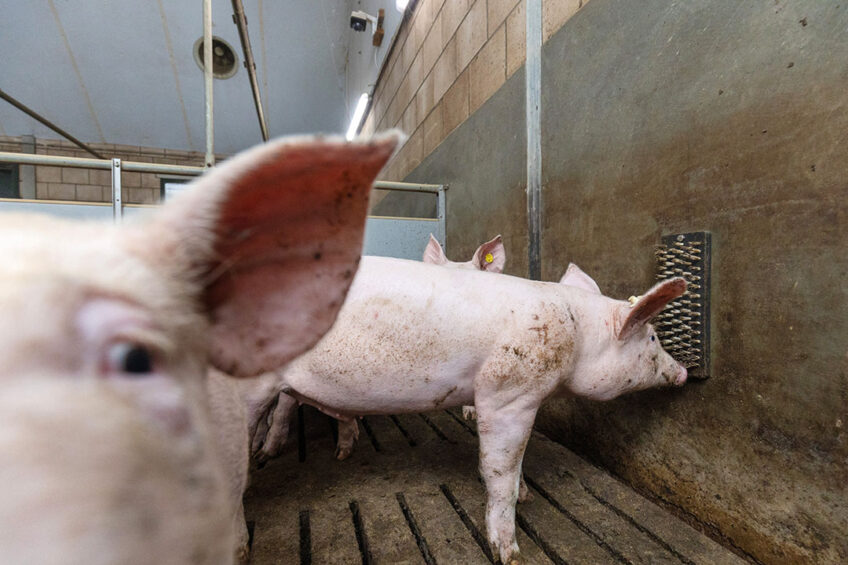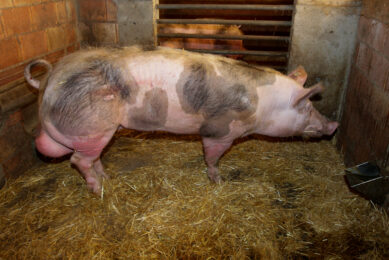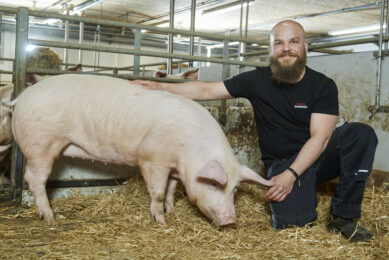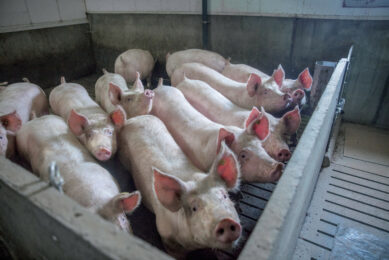Hair analysis: a new way to test resilience in pigs

Pigs that are more generally resistant to stress are also more resistant to disease and demonstrate better overall performance. This fact is already used to some extent in breeding programmes for pigs and other livestock animal types. A new window into resilience to stress in pigs – through hair analysis – will lead to greater and more accurate breeding relating to this fact in future.
Stress for pigs can come from changes in their environment, transportation, inappropriate conditions in the barn or truck, uncertainty about feeding schedules and much more. And because they are kept in groups for part of their lives, pigs also experience social stress.
Stress indicators
Stress indicators are grouped into 3 main categories. These are: causal indicators (certain behaviours such as tail biting, type and number of social interactions) biological response indicators (for example, blood stress hormone levels) and consequence indicators (overall performance).
As mentioned, stress hormones can be measured through blood analysis, but a non-invasive and economical approach is to clip and analyse how much stress hormone is ‘locked’ into the hair of the pig.
Research into this way of measuring stress was started several years ago by Dr. Jack Dekkers at Iowa State University and his colleagues there, and in Canada at the Universities of Saskatchewan and Alberta and the Centre de développement du porc in Quebec.
Hair tells the tale
Hair sampling analysis is not only non-invasive, but Dekkers has recently explained that it tells a different story than blood analysis for stress hormone levels. That is, as hair grows, some stress hormones get deposited in it and, unlike stress hormone levels in blood which fluctuate all the time, are permanently accumulated. Therefore hair grown over a given will reflect stress response over that whole period.
The study started in 2021. The research pigs are located in Quebec and stress hormones in the hair samples from those pigs is measured at the University of Saskatchewan. The data from that work is being analyzed there and at Dekkers’ lab at Iowa State.
Response to typically stressful situations
In addition to stress response due to introduction of disease, the researchers are interested in how pigs respond to typically stressful situations such as being weaned, being transported and being put in a new group where a new social order takes form. Hair samples have therefore been taken at various points in the life of the study pigs, which now number at about 1000 animals.
Hormones and DNA
Researchers already know that pigs with a low ratio of the stress hormones cortisol to DHEA in hair are less stressed. Which genetic lines have more stress resiliency can inform breeding programmes, but the research is going further into investigating the specific genetic underpinnings that result in more or less resiliency.
In addition, Dr. Yolande Seddon who leads the analysis at U of Sask and also serves as the ‘NSERC Industrial Research Chair in Swine Welfare’ for Canada, says that another long-term goal of the research team is use this analysis method to evaluate animal welfare in current husbandry systems for swine.
She adds that since hair can be easily stored, samples can also be analyzed in future studies as technology evolves.











